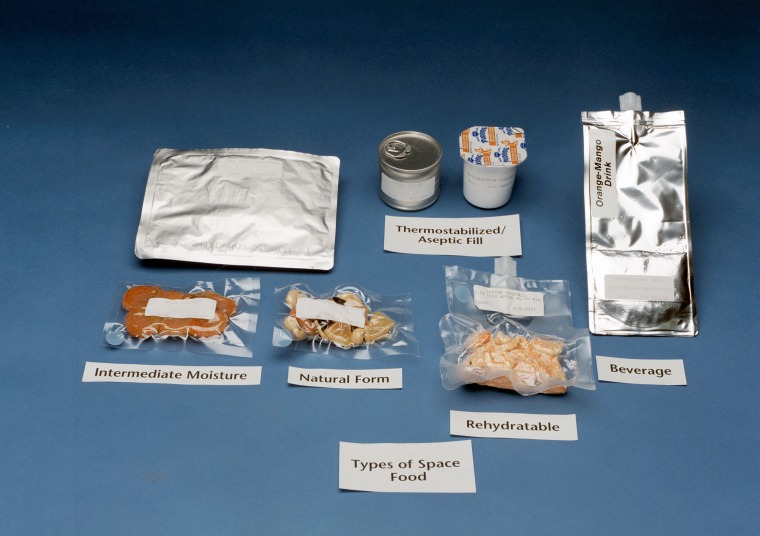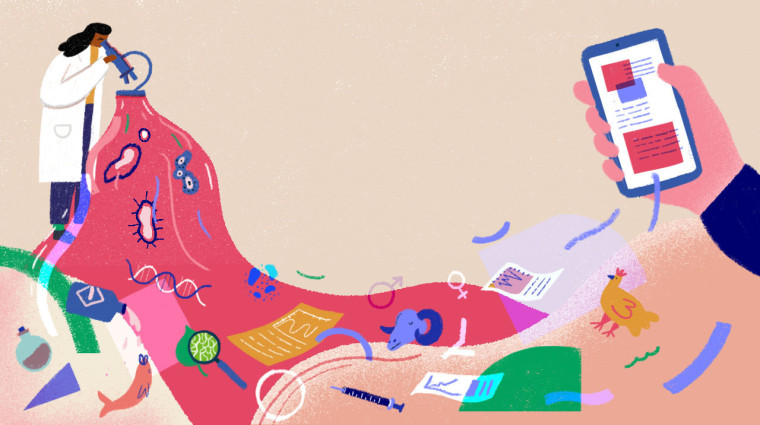The news today is filled with reporting on groundbreaking scientific studies, from those diagnosing the symptoms of COVID-19 to those tracking how it spreads to those exploring novel treatments and vaccines. It's clear that we’d have no hope of combating the pandemic and returning to a state of normalcy without the research being done right now.
A high number of patients were men with male pattern baldness. This sounds like something straight from Trivial Pursuit: Respiratory Illness Edition, but it actually provides important information.
But most of the time, scientific coverage is much lower on the totem pole, and usually comes in two less valued types. The first makes you think, "That's pretty cool," and the second makes you ask, "How is that remotely useful to know?" The latter generally breaks down into two more types: hopelessly esoteric research that appears to be of no practical use, and research that searches for incredibly obvious results.
For all the articles hailing major advances yielding fantastic benefits to humanity, from airplanes to telephones to lifesaving medical procedures, there have been others that received Golden Fleece Awards, given out by the late Sen. William Proxmire to ridicule what he saw as wasteful government spending. One federal grant recipient investigated why prison inmates want to escape, while another looked at the pugnaciousness of sunfish under the influence of different types of alcohol. (The study examined gin and tequila, so if you catch a bluegill while fishing and have a beer handy, we might really learn something).
But while it’s easy to scoff at such research, science works by layering discovery on discovery — and without having foundational studies that verify obvious sounding but often faulty assumptions, the whole structure can collapse. Discoveries also work like puzzle pieces, and ones that seem insignificant on their own can fill in important information when combined with others. That’s why it’s important that we recognize the contributions of studies no matter how strange they may be, and don’t ignore them — or cut their funding — once we have defeated COVID-19 and lose our focus on the importance of research.
Perhaps the best way to think of research, however, is as a pyramid, with each study a different brick. At the top are practical results that we celebrate, like saving a species from extinction. But in order to get there, the bottom and the middle of the pyramid have to be filled in with lots of other bricks, many of which aren't overly useful on their own. To save a species, we need to know how many individuals currently exist, where they live, what they eat, what eats them, how they interact with people and more. These bricks of research build a structure that can hold the weight of the capstone, the desired result.
Our investigation into COVID-19 illustrates this well, with its starting point a seemingly frivolous investigation of farm animals. In 1931, a year when the nation was in the depths of the Great Depression and tuberculosis alone killed over 81,000 Americans, there were scientists studying disease-stricken chickens in North Dakota. They had the first coronavirus ever identified.
Like COVID-19, the first coronavirus was deadly — but it only infected poultry. Thankfully, scientists continued to study coronaviruses, and by the 1960s, the first coronaviruses that could infect humans were identified. Though at that time they only caused the common cold, this research likely provided scientists with important baseline information about how coronaviruses spread.
Even new studies on COVID-19 can at first glance seem frivolous. Early observations from hospitalized COVID-19 patients in Spain found that a high number of patients were men with male pattern baldness. This sounds like something straight from Trivial Pursuit: Respiratory Illness Edition, but it actually provides important information on who might be at greater risk from the virus.
It turns out that male pattern baldness is associated with higher levels of male hormones, and this along with several other observations suggests that male hormones like testosterone may make it easier for the virus to enter cells. In order to quickly determine whether hospitalized male patients have a higher rate of male pattern baldness than the general population, we needed to have completed studies that answered questions like, “How many guys have male pattern baldness?” and even, “How do you classify hair loss?” (Apparently the most commonly used classifications are the Hamilton-Norwood system for men and the Ludwig system for women.)
In many cases, a “brick” of research can be part of two pyramids of scientific exploration at once. The technology used to determine what the face of a prehistoric man found in a bog looks like is the same technology used to determine what the face of a cold-case victim looks like. And scientists often don’t know what pyramid a new brick will be a part of because it didn’t exist at the time it was made.
Back in the 18th century, Carl Linnaeus believed that God created each type of animal as generally unchanging entities and lived a century before Charles Darwin introduced the theory of evolution. Despite this, binomial nomenclature, the method he created to categorize life, is still used today by biologists, as are many of the thousands of species he named, including Homo sapiens— human beings.
For a more recent (and much more expensive) example, we can look to NASA. The Apollo program spent over $260 billion in 2019 dollars to beat the Soviets to the moon and get that one giant leap for mankind (and 800 pounds of moon rocks and soil). But much of the technology NASA used was then applied here on Earth. Freeze-dried foods, heat-resistant clothing for firefighters and digital flight systems for aircraft all come from the Apollo program — and more innovations are yet to come, including car tires that won’t burst. Since 1976, NASA has cataloged nearly 2,000 commercial products that are derived from technology developed from the space race.

This isn’t to say that all scientific research is ultimately beneficial and worthwhile, but given how difficult it is to discern the usefulness of the outcome until years if not decades later, our best strategy is to continue to cast a wide net rather than only support research with immediately tangible results.
To counter the contempt and misunderstanding spread by the Golden Fleece prizes, the Golden Goose Awards were established to celebrate valuable achievements from odd-sounding research. Studying bacterial infections in horseshoe crabs led to a test for bacterial infection of medical devices now performed about 70 million times a year to help ensure the safety of lifesaving medical equipment. Scientists that massaged baby rats to increase enzyme levels pioneered infant massage therapy that saves the lives of premature babies and more than $4 billion a year. A lack of computing power to model black hole collisions led to the creation of the first Internet browser. And the Golden Goose Awards are already preparing to honor unusual research that helps us understand COVID-19.
So the next time you hear a sound bite about a “useless” study, consider a phrase attributed to Aristotle, who laid one of the first bricks of the pyramid of science thousands of years before it was completed: "The whole is greater than the sum of its parts."


